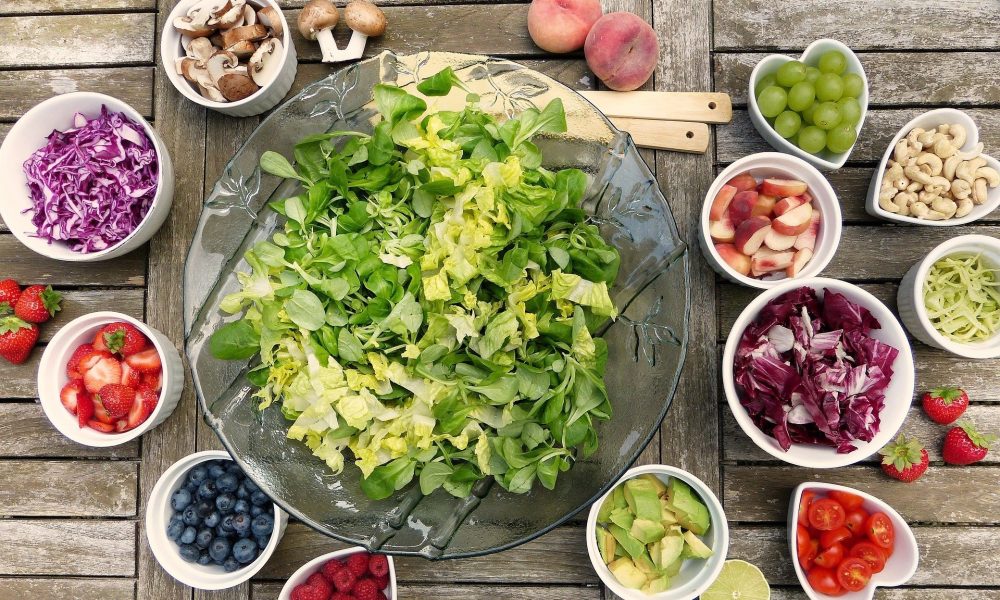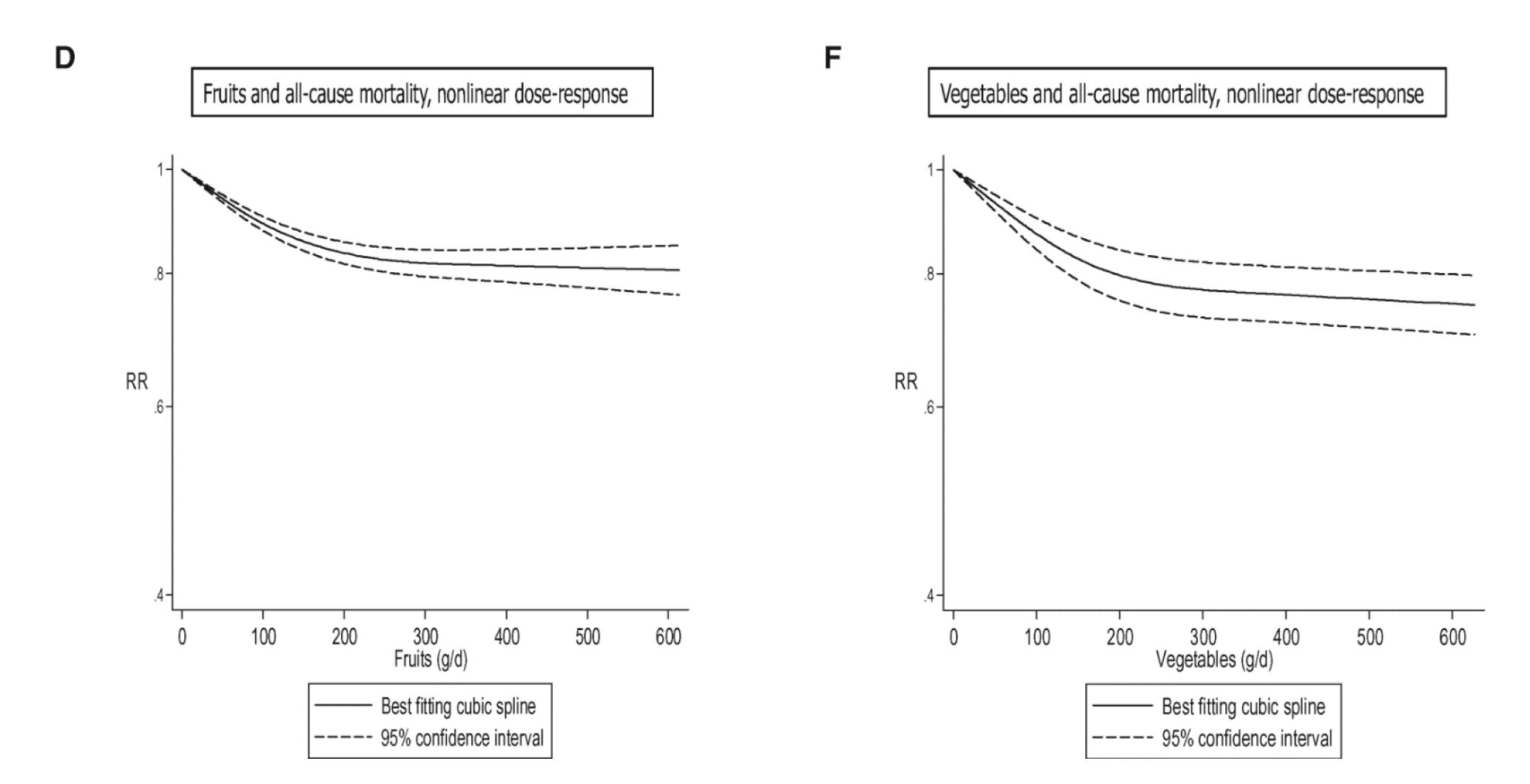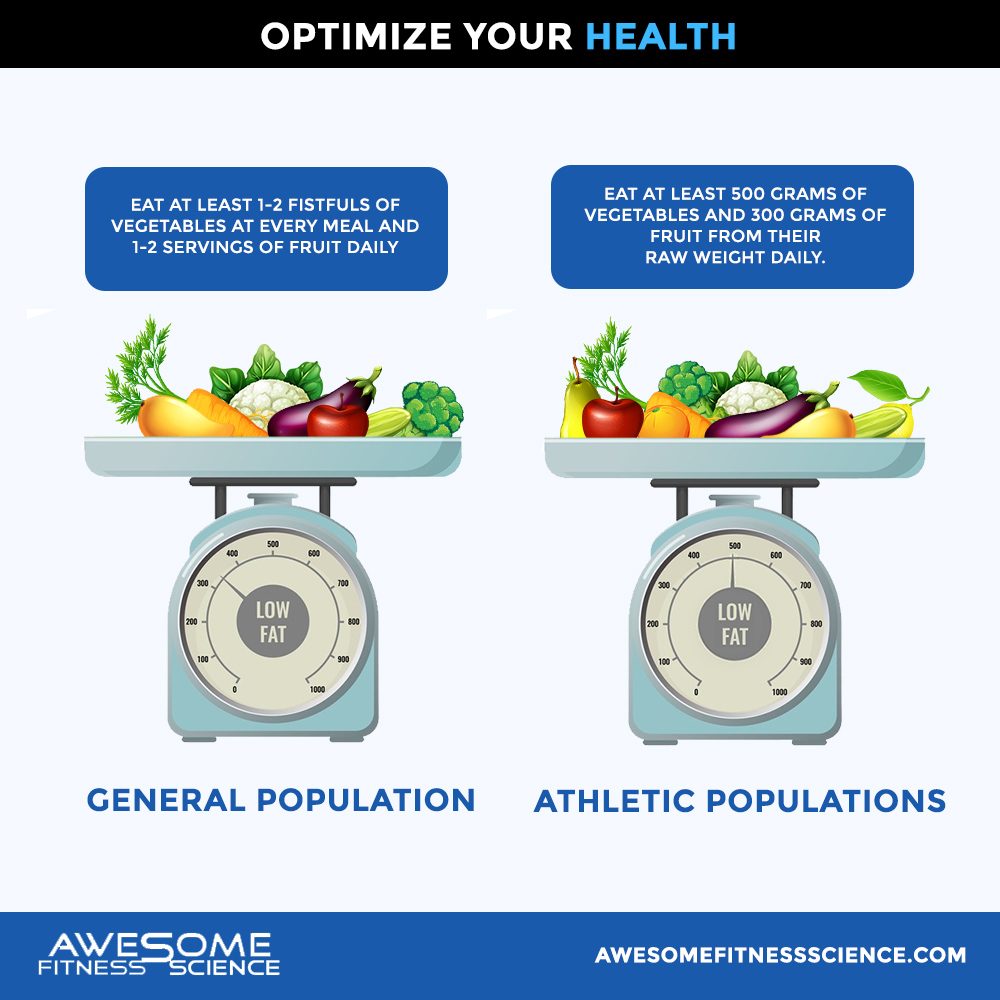
Are Artificial Sweeteners Bad For You? The Shocking Truth
Let’s take an objective scientific approach to answering the infamous question, are artificial sweeteners really bad for you?

Alright little Timmy, take a seat. We need to talk. And yes, I just called you little Timmy even though you’re a grown adult who’s name probably isn’t Timmy.
Nonetheless, I need to play sweet-talking parent here and attempt to convince you of something you don’t want to hear. Brace yourself little Timmy.
You see, we live in a world where adults are diseased and overweight. I know, rough reality, but this is largely preventable. Let me tell you of a magically powerful practice to enhance your health and nearly every part of your life.
It’s this awesome thing called eating your fruits and freaking vegetables!
Did your face cringe at the thought of kale?
This is the part where you undoubtedly disobey me as your figurative parent because fruits and vegetables don’t taste as good as chips and pastries. I get it, but this is the part where I sternly reiterate what I said earlier.
You need to eat your fruits and freaking vegetables!
You’re now tempted to throw a childish tantrum, but simmer down a bit little Timmy. Let me explain why eating your fruits and veggies is so important as nicely as I can.
When it comes to health, fruits and veggies are powerhouses with veggies always being slightly better. Nonetheless, they make the foundation of a healthy diet that promotes longevity despite what some carnivore diet fanboy tells you.
In fact, besides the carnivore diet community, every other diet community at least agrees that vegetables are good for you. Most will agree fruit is good as well.
Getting nutrition voices to agree on anything is a nightmare. Nobody agrees on eggs, gluten, dairy, artificial sweeteners, red meat, or other controversial choices.
But if the nutrition industry can for the most part agree that plants are good for you, especially vegetables, that should make the consumer like yourself think, “Oh snap, this ego-centered industry of experts all say broccoli is good for me. I should probably eat more of it.”
For starters, the fiber, micronutrient, and active compound profile of fruits and veggies outperform every other food group like Ronnie Coleman out benching a group of high school band geeks (1,2). The difference is that significant.
Consequently, if your diet doesn’t have many fruits and vegetables, you don’t need bloodwork to reveal if you’re nutrient deficient. You undoubtedly are (3).
Increasing fruit and vegetable intake can quickly fix many of your vitamin/mineral deficiencies (14,15,16).
Fruit and vegetable intake consistently improve every health/cognition marker and reduces the risk of numerous diseases either directly or indirectly (4-13). Lining up with this data, fruits and vegetables are highly anti-inflammatory and strengthens your immune cells (17).
They even increase semen quality in men (32).
Furthermore, by eating more fruits and veggies, your caloric intake doesn’t compensate (16).
This means, you can make your diet healthier without even focusing on cutting out other foods. Simply focus on eating more fruits and veggies and life will be peachy. See what I did there hehe.
Fruits and veggies are extremely filling which causes you to eat less calories and thus, always favor fat loss in many populations (18-24).
In fact, fruit and vegetable intake are an extremely strong predictor if somebody can lose weight, how much they lose, and if they can keep the weight off (25).

If that’s not enough motivation to load up your plates with veggies, I don’t know what is.
How you prepare them is pretty irrelevant. All cooking methods keep the nutrient profile similar or make them easier to absorb (26). Thus, cooking doesn’t change their inherent health benefits. It can simply impact their energy density if other ingredients are involved.
So obviously, deep frying your veggies is not a fat loss friendly way of eating them. Juicing them still gets you nutrients, but also isn’t fat loss friendly due to losing much of it’s satiating effects (31).
Eating them within a meal increases their nutrient absorption, but in general, don’t overthink this (26). If you don’t eat vegetables, start somewhere. Frozen veggies is fine too and in some cases more nutritious. Sprinkle some cheese or drown them in hot sauce if you don’t like the taste.
Eat what you like if you struggle with variety. Don’t listen to the dorks that say you have to have 10 different colors at every meal. Simply eating them is far better than not eating any.
You’ll feel far more satiated. In fact, people often complain about being hungry when dieting, but it’s simply because they don’t consume enough vegetables. I often challenge my clients to eat an absurd amount in one sitting. Most people can’t stomach past very much.
That being said, an optimal amount is far past what most people are currently consuming. The USDA generally recommends 3 cups of veggies and 2 cups of fruit for the average adult.
Other regulating boards recommend 400 grams of total fruit and veggies in their consumed weight (27).
However, these are quite pitiful recommendations as research finds benefits far past this amount in average Joes.
One systematic review of meta-analyses (study of studies) found clear benefits as high as 100 grams of fruit daily and 200 grams of vegetables daily (28).
Another systematic review looking at all cause mortality found benefits nearly peaked at 200-300 grams for both fruit and vegetable individually (29). When analyzed together, there were slightly more benefit up to about 800 grams. They both followed a similar curve suggesting their benefits are interchangeable long term if you account for other factors. If you look closely though, veggies still performed slightly better. This makes sense as veggies have a better nutrient profile and are usually lower in calorie.

Nonetheless, the analysis found you can reap nearly maximum benefits by staying between 500-800 grams of total of fruit and vegetable intake daily. Bigger people should eat more and smaller people can get away with eating less.
This is still daunting to many people.
So my practical recommendation for clients are as follows:
If you’re an active individual or a serious athlete, your micronutrient needs are likely higher due to performance demands and nutrient loss from sweat. The safest bet is aiming for at least 500 grams of vegetables and 300 grams of fruit from their raw weight daily.
If this all sounds a bit much for you and you’ve never even tracked your macros, simply aim to eat 1-2 fistfuls of low starch vegetables at every meal and 1-2 pieces of fruit each day (30).

It’s odd how parents will pull tooth and nail to get their kids to eat their vegetables, yet many adults severely undereat them as well.
Veggies (with fruit as a close second) are the healthiest food groups in the world while also being the cheapest. So, you look like a lame excuse maker when you say eating healthy is expensive. It’s not.
Go buy fruits and vegetables. Don’t let them rot in the fridge by you know, putting them in your mouth consistently.
Over time, they will enhance every part of your life allowing you to dominate the world. You can thank me later.
1. Gardner, Christopher D, et al. “Micronutrient Quality of Weight-Loss Diets That Focus on Macronutrients: Results from the A TO Z Study.” The American Journal of Clinical Nutrition, American Society for Nutrition, Aug. 2010, www.ncbi.nlm.nih.gov/pmc/articles/PMC2904033/.
2. Liu, Rui Hai. “Health-Promoting Components of Fruits and Vegetables in the Diet.” Advances in Nutrition (Bethesda, Md.), American Society for Nutrition, 1 May 2013, www.ncbi.nlm.nih.gov/pmc/articles/PMC3650511/.
3. Asfaw, A., et al. “Prevalence of Micronutrient Deficiency in Popular Diet Plans.” Journal of the International Society of Sports Nutrition, BioMed Central, 1 Jan. 1970, jissn.biomedcentral.com/articles/10.1186/1550-2783-7-24.
4. Slavin, Joanne L, and Beate Lloyd. “Health Benefits of Fruits and Vegetables.” Advances in Nutrition (Bethesda, Md.), American Society for Nutrition, 1 July 2012, www.ncbi.nlm.nih.gov/pmc/articles/PMC3649719/.
5. Boeing, Heiner, et al. “Critical Review: Vegetables and Fruit in the Prevention of Chronic Diseases.” European Journal of Nutrition, Springer-Verlag, Sept. 2012, www.ncbi.nlm.nih.gov/pmc/articles/PMC3419346/.
6. Conrad, Zach, et al. “Greater Vegetable Variety and Amount Are Associated with Lower Prevalence of Coronary Heart Disease: National Health and Nutrition Examination Survey, 1999-2014.” Nutrition Journal, BioMed Central, 10 July 2018, www.ncbi.nlm.nih.gov/pmc/articles/PMC6040059/.
7. Ludwig, David S, et al. “Dietary Carbohydrates: Role of Quality and Quantity in Chronic Disease.” BMJ (Clinical Research Ed.), BMJ Publishing Group Ltd., 13 June 2018, www.ncbi.nlm.nih.gov/pmc/articles/PMC5996878/.
8. Blekkenhorst, Lauren C, et al. “Cardiovascular Health Benefits of Specific Vegetable Types: A Narrative Review.” Nutrients, MDPI, 11 May 2018, www.ncbi.nlm.nih.gov/pmc/articles/PMC5986475/.
9. Blekkenhorst, Lauren C, et al. “Cruciferous and Total Vegetable Intakes Are Inversely Associated With Subclinical Atherosclerosis in Older Adult Women.” Journal of the American Heart Association, John Wiley and Sons Inc., 4 Apr. 2018, www.ncbi.nlm.nih.gov/pmc/articles/PMC6015430/.
10. Lee, Hye Ah, et al. “Mediating Effects of Metabolic Factors on the Association between Fruit or Vegetable Intake and Cardiovascular Disease: the Korean National Health and Nutrition Examination Survey.” BMJ Open, BMJ Publishing Group, 28 Feb. 2018, www.ncbi.nlm.nih.gov/pmc/articles/PMC5855238/.
11. Fardet, Anthony, et al. “Association between Consumption of Fruit or Processed Fruit and Chronic Diseases and Their Risk Factors: a Systematic Review of Meta-Analyses.” OUP Academic, Oxford University Press, 17 Apr. 2019, academic.oup.com/nutritionreviews/article/77/6/376/5474950.
12. Malin, Alecia S, et al. “Intake of Fruits, Vegetables and Selected Micronutrients in Relation to the Risk of Breast Cancer.” International Journal of Cancer, U.S. National Library of Medicine, 20 June 2003, www.ncbi.nlm.nih.gov/pmc/articles/PMC1780272/.
13. Fieldhouse . “A Suboptimal Diet Is Associated with Poorer Cognition: The NUDAD Project.” Nutrients, U.S. National Library of Medicine, pubmed.ncbi.nlm.nih.gov/32155876/.
14. Pem, Dhandevi, and Rajesh Jeewon. “Fruit and Vegetable Intake: Benefits and Progress of Nutrition Education Interventions- Narrative Review Article.” Iranian Journal of Public Health, Tehran University of Medical Sciences, Oct. 2015, www.ncbi.nlm.nih.gov/pmc/articles/PMC4644575/.
15. Duthie, Susan J, et al. “Effect of Increasing Fruit and Vegetable Intake by Dietary Intervention on Nutritional Biomarkers and Attitudes to Dietary Change: a Randomised Trial.” European Journal of Nutrition, Springer Berlin Heidelberg, Aug. 2018, www.ncbi.nlm.nih.gov/pmc/articles/PMC6060837/.
16. Fulton . “The Effect of Increasing Fruit and Vegetable Consumption on Overall Diet: A Systematic Review and Meta-Analysis.” Critical Reviews in Food Science and Nutrition, U.S. National Library of Medicine, pubmed.ncbi.nlm.nih.gov/25118067/.
17. Hosseini, Banafshe, et al. “Effects of Fruit and Vegetable Consumption on Inflammatory Biomarkers and Immune Cell Populations: a Systematic Literature Review and Meta-Analysis.” OUP Academic, Oxford University Press, 21 June 2018, academic.oup.com/ajcn/article/108/1/136/5042153.
18. Sharma, Satya P, et al. “Paradoxical Effects of Fruit on Obesity.” Nutrients, MDPI, 14 Oct. 2016, www.ncbi.nlm.nih.gov/pmc/articles/PMC5084020/.
19. Guyenet, Stephan J. “Impact of Whole, Fresh Fruit Consumption on Energy Intake and Adiposity: A Systematic Review.” Frontiers in Nutrition, Frontiers Media S.A., 8 May 2019, www.ncbi.nlm.nih.gov/pmc/articles/PMC6518666/.
20. Abdul . “Effect of Sequence of Fruit Intake in a Meal on Satiety.” International Journal of Environmental Research and Public Health, U.S. National Library of Medicine, pubmed.ncbi.nlm.nih.gov/31766283/.
21. Dreher, Mark L. “Whole Fruits and Fruit Fiber Emerging Health Effects.” Nutrients, MDPI, 28 Nov. 2018, www.ncbi.nlm.nih.gov/pmc/articles/PMC6315720/.
22. JL;, Hess. “Impact of Agaricus Bisporus Mushroom Consumption on Satiety and Food Intake.” Appetite, U.S. National Library of Medicine, pubmed.ncbi.nlm.nih.gov/28647383/.
23. Rolls . “Volume of Food Consumed Affects Satiety in Men.” The American Journal of Clinical Nutrition, U.S. National Library of Medicine, pubmed.ncbi.nlm.nih.gov/9625090/.
24. Chambers, Lucy, et al. “Optimising Foods for Satiety.” Trends in Food Science & Technology, Elsevier, 28 Oct. 2014, www.sciencedirect.com/science/article/pii/S0924224414002386.
25. M;, Arnotti. “Fruit and Vegetable Consumption in Overweight or Obese Individuals: A Meta-Analysis.” Western Journal of Nursing Research, U.S. National Library of Medicine, pubmed.ncbi.nlm.nih.gov/31256714/.
26. K;, Platel. “Bioavailability of Micronutrients from Plant Foods: An Update.” Critical Reviews in Food Science and Nutrition, U.S. National Library of Medicine, pubmed.ncbi.nlm.nih.gov/25748063/.
27. “Measuring Intake of Fruit and Vegetables [Electronic Resource] / Antonio Agudo.” World Health Organization, World Health Organization, 1 Jan. 1970, apps.who.int/iris/handle/10665/43144.
28. Chun Yip , Cynthia Sau, et al. “The Associations of Fruit and Vegetable Intakes with Burden of Diseases: A Systematic Review of Meta-Analyses.” Journal of the Academy of Nutrition and Dietetics, Https://Doi.org/10.1016/J.jand.2018.11.007, 10 Jan. 2019, jandonline.org/article/S2212-2672(18)31342-X/fulltext.
29. Aune, Dagfinn, et al. “Fruit and Vegetable Intake and the Risk of Cardiovascular Disease, Total Cancer and All-Cause Mortality-a Systematic Review and Dose-Response Meta-Analysis of Prospective Studies.” International Journal of Epidemiology, Oxford University Press, 1 June 2017, www.ncbi.nlm.nih.gov/pmc/articles/PMC5837313/.
30. Wang . “Fruit and Vegetable Intake and MORTALITY: Results from 2 Prospective Cohort Studies of Us Men and Women and a Meta-Analysis of 26 Cohort Studies.” Circulation, U.S. National Library of Medicine, pubmed.ncbi.nlm.nih.gov/33641343/.
31. HA;, Benton. “Role of Fruit Juice in Achieving the 5-a-Day Recommendation for Fruit and Vegetable Intake.” Nutrition Reviews, U.S. National Library of Medicine, pubmed.ncbi.nlm.nih.gov/31504822/.
32. Madej, Dawid, et al. “Influence of Fruit and Vegetable Consumption on Antioxidant Status and Semen Quality: A Cross-Sectional Study in Adult Men.” Frontiers in Nutrition, Frontiers Media S.A., 15 Oct. 2021, https://www.ncbi.nlm.nih.gov/pmc/articles/PMC8554053/.
Grab my free checklist on how to defeat your worst food cravings

Let’s take an objective scientific approach to answering the infamous question, are artificial sweeteners really bad for you?

Refeeds are essentially mini diet breaks. However, instead of going to maintenance for weeks at a time, refeeds only last days. Some people also take refeeds into a surplus.

Intuitive eating is an eating style or eating philosophy where you eat in tune with your body’s hunger signals. This is similar to ad libitum eating which is defined as eating till desired.